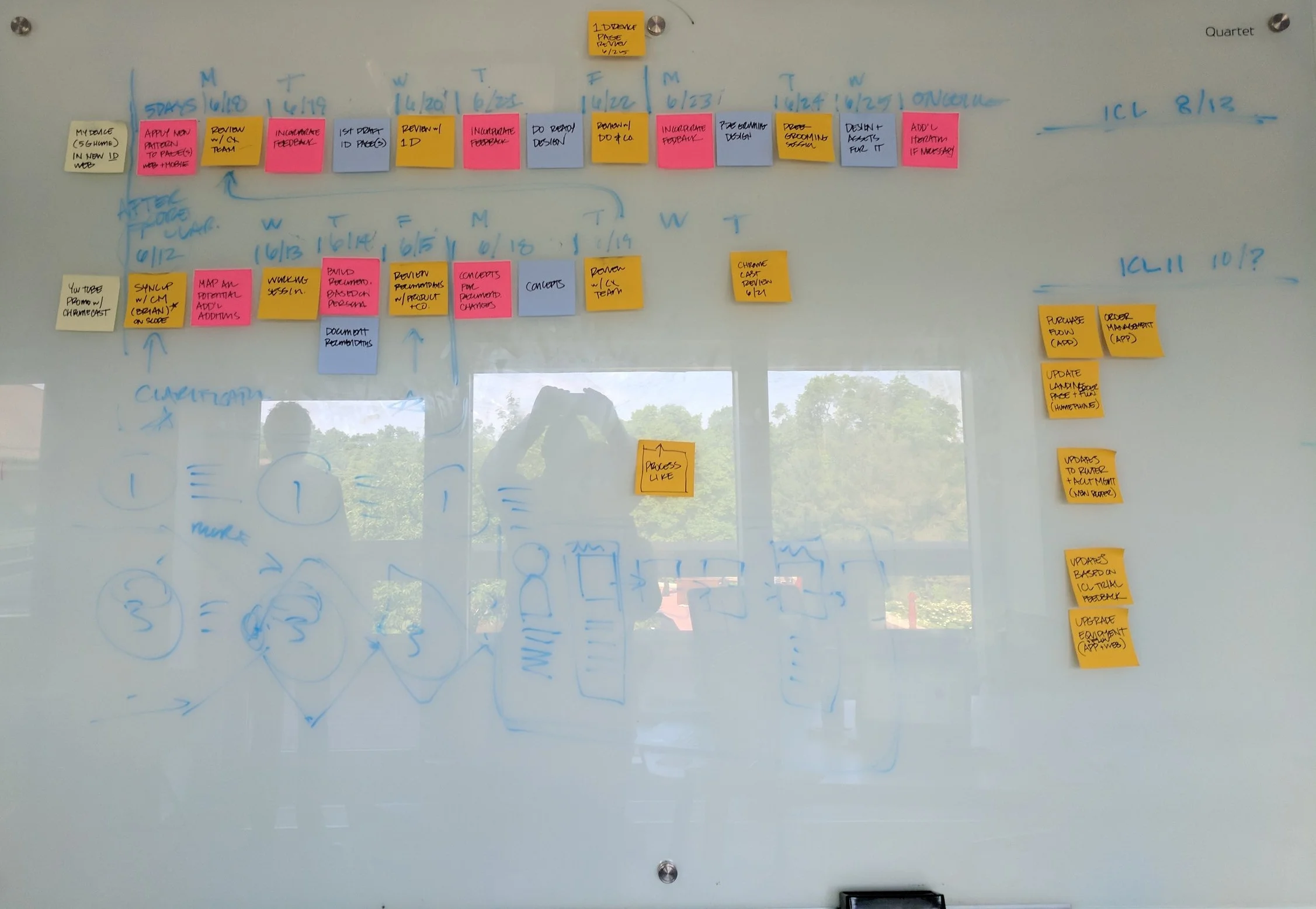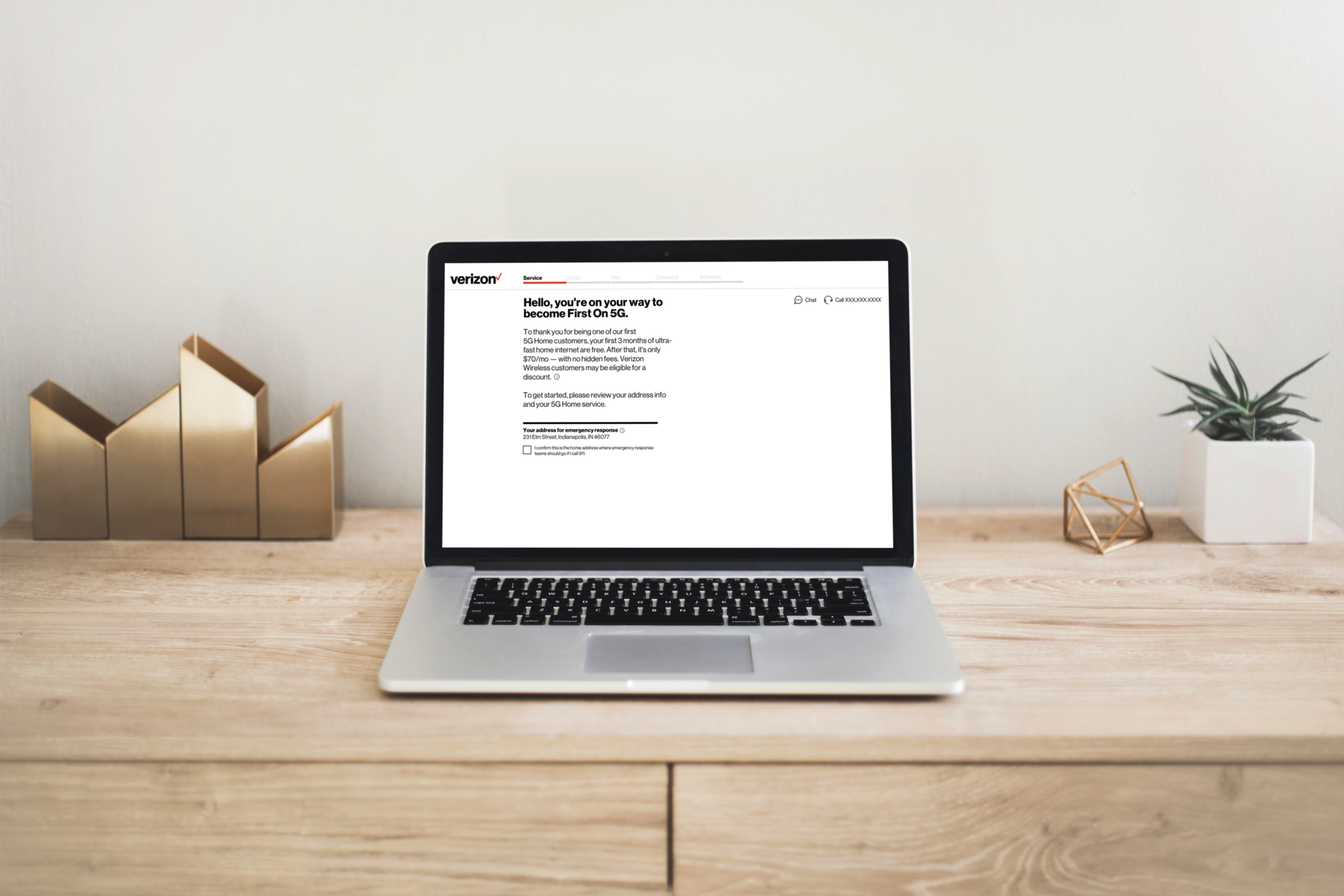5G Ordering Experience
COMPANY
Verizon
My Roles
Lead Designer for Sales Flow
Sketching Solutions, Use Cases, User Flows, Wireframing, Visual Design, Prototyping
Introduction
Verizon became the first to launch 5G, the fifth generation of wireless technology, in September 2018. Sacramento, Los Angeles, Houston, and Indianapolis were the first cities to receive 5G Home internet service. So what is 5G? Think of your current internet speed but 30-50 times faster. Let’s put into perspective. You’re at an airport getting ready for a 10 hour flight. You’re getting ready to board and suddenly you remember to download your favorite movie. With current speeds of 4G, that movie could take 6 minutes to 3 hours to download. With 5G, you’ll be able download it in seconds.
In terms of latency, 3G has 130 milliseconds of lag time, 4G has 15-60 ms, and 5G is expected to have just 1 ms of lag time. 5G can help fight traffic in smart cities, improve city monitoring, make remote surgery possible, enhance your VR and AR experiences, and is expected to make self-driving cars much more reliable.
The Challenge
My team was tasked for building the end to end experience of the customer’s journey. I was involved with how the customer decides to get 5G Home, makes the purchase, and receives the service. The business needed to have a smooth and simple sign up experience that was easier than what was currently in business. As the Customer Experience team, we needed to address customers' top frustration: price transparency.
Understand
We worked closely with various teams including Digital Operations, Product, Sales, Marketing, Business, and IT. We met daily to discuss new requirements, product updates, timelines, and feedback.
Business GOALS
Be the first to launch 5G fixed wireless home internet service.
Get as many customers as possible to purchase 5G.
Make it easy for both prospect and current customers to see if 5G Home is available for where they live.
Ensure that customers understand the value proposition (free for 3 months and after that, a flat price of $70/month, taxes and fees included).
Users GOALS
Based off of user research on our previous broadband service and a pre-trial conducted for 5G, we learned about the pain points users reported to have.
They don’t want to be locked into a contract.
They want to know the price upfront. Lack of price transparency leads to distrust and resentment.
They want faster internet.
Contrary to what we believed, they were overall satisfied with their current internet service provider. However, they are willing to drop their current service if Verizon provided a service with a clear and lower price.
Analyze
Our team developed the customer journey map and personas. We reviewed them with our cross-functional team to ensure alignment. We created task flows and worked with Digital Operations in shaping user stories. After mapping out the primary user scenarios, my team and I also listed other possible user scenarios and use cases.
Design
I sketched 3 options for the primary "happy flow" (success flow) and reviewed with my team. Once I got approval, I presented it to the Digital Operations and IT teams. After working on their feedback, I continued to work on the other user scenarios and edge cases.
We worked with the branding and marketing teams to ensure that our designs met brand guidelines.
We worked with our copy team and the legal team to ensure that what we communicated was clear, concise, and transparent.
By laying out each screen, we were able to think of other use cases that may happen in the experience.
Test
We worked with our research team to validate our designs with prototypes I created on Invision.
In our most recent study, users thought the ordering flow was intuitive and didn’t have any trouble getting through it. One outstanding item we addressed was syncing up the confirmation page with the confirmation email. The confirmation email had less information than the confirmation page. There was no way for a customer to return to a confirmation page but they have the confirmation email at hand to refer to. We worked with the team in charge of email communications to make this update.
Deliver
I delivered the design specifications through Invision. After each release, we checked on any new data that our research team may have. If there's a change in requirement or improvement needed on the design, we work with IT to see what release this can make it to. If a new requirement comes in, then we’d go back to Step 1 in understanding what the ask is.
We also worked with the Data Analytics team to pinpoint where the significant dropout rates are.
As of December 2018, we hit the 1000th sale milestone. We had 1,008 sales and 542 installations. 76% of sales (749 orders) were placed online and 259 were placed over the phone.
Verizon Design Summit 2018
Verizon hosted its first annual design summit on December 2018. My coworker and I had the honor to present the 5G Home project to our fellow design teams across Verizon.
Lessons Learned
It's important to establish the design process when working with other teams. Otherwise the conversation will sound like this: "Here's what we need. Can you get it done tomorrow?"
When a new requirement comes in, it’s important to question the reason for the requirement and its source. Sometimes, a casual suggestion can develop into a hard requirement as it travels down the grapevine.






